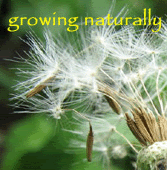
Back from my LIFEWAYS training and so much to process, read and integrate. I am loving all the new readings!! More on that another day. Today I want to write about Goldenrod.....I have always loved this plant. A bittersweet a sign in these parts that the end of the summer is fast approaching, the last BIG flower showing of the summer. They are all perennials with large clusters of small yellow flowers that appear from the end of summer until frost. Just about every insect with an interest in flowers may by found on goldenrod in autumn.
and such a misunderstood plant. Goldenrod gets mistakenly blamed for the agonies of hay fever/allergy sufferers in autumn. It blooms at the same time as ragweeds (Ambrosia sp.), which are the real culprit. Ragweeds are pollinated by the wind. Goldenrod is insect pollinated.
People suffering from allergies in September look for a flower to blame and goldenrod gets the rap because it is so visible and abundant. The pollen grains of goldenrod, as is true of all insect-pollinated flowers, are comparatively fat and sticky so that they will adhere to visiting insects and be transferred by them to another flower. In order for a person to be affected by goldenrod pollen, they would have to stick their nose right into the flower just like a bee would! Ironically medicinally it is the herb of choice for those upper respiratory/allergy type symtoms. I will post again later with the medicinal uses of Goldenrod.
I learnt something new at my lifeways training about well loved plant of mine. It makes a great plant dye. A colour as bright as it looks. We used it to dye silks and the colour was glorious! True summer! and how simple. (see photo above)
• Family: Aster (Asteraceae)
• Habitat: roadsides, clearings, thickets
• Height: 1-5 feet
• Flower size: flowerheads 1/8 inch high, in plume-shaped cluster 3-5 inches across
• Flower color: yellow
• Flowering time: July to September
• Origin: native
Collect goldenrod flowers (a good amount). Chop and add to a pot of water and boil and simmer for a few hours. Strain and add mordant. We used 2 parts (2oz) alum to 1 part cream of tartar (1oz) disolved in hot water. The mixture is mildly toxic (irritant) so be careful when handling. Mix the mordant mixture with the strained Goldenrod mixture.Let sit overnight and voila! you have your dye. Silk can be left in anywhere from 10 mins - 2-3 hours depending on the colour you want. Rinse and you have your plant dyed silk.









No comments:
Post a Comment